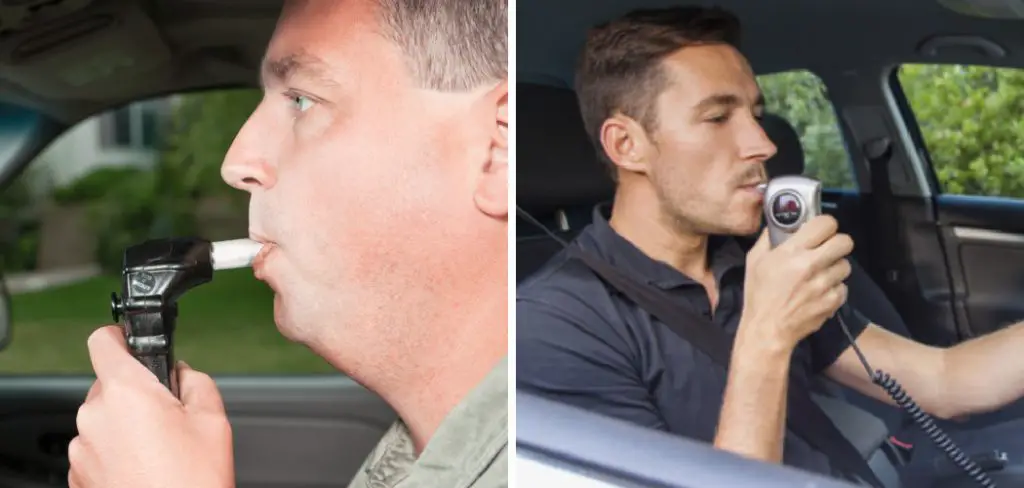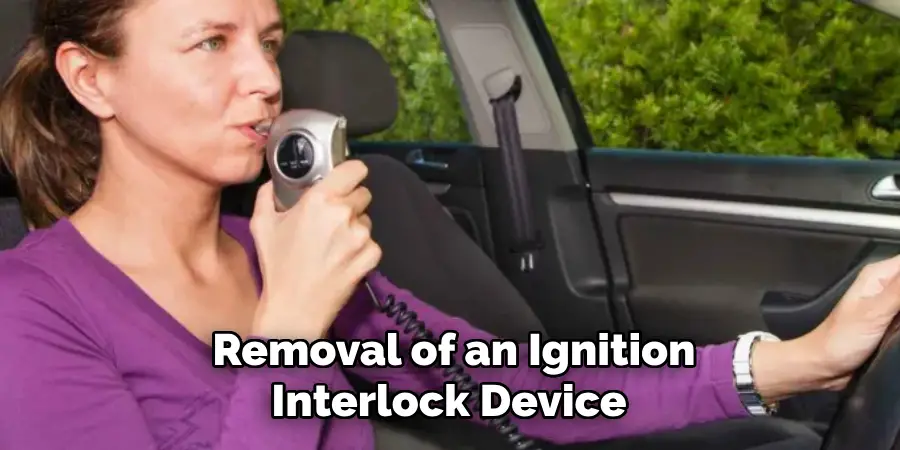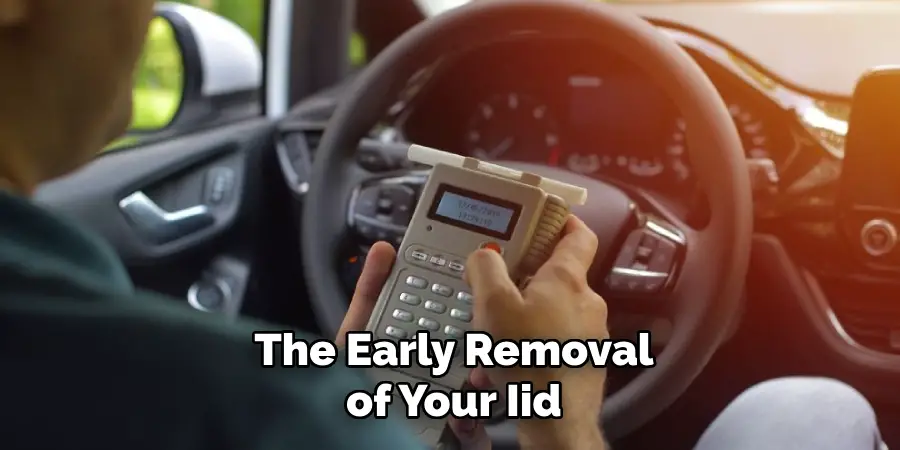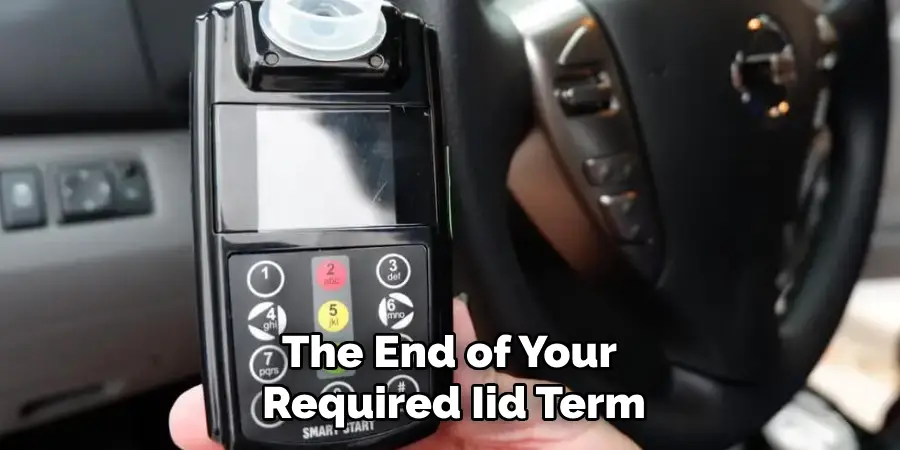An ignition interlock device (IID) is a breathalyzer installed in a vehicle that requires the driver to blow into it to ensure they haven’t consumed alcohol before the car can start. IIDs are commonly mandated by court orders for individuals convicted of DUI (driving under the influence) offenses as a preventive measure against impaired driving. However, situations may arise where individuals seek early removal of an IID,

such as maintaining a clean driving record, complying with all monitoring requirements, or having personal circumstances that warrant reconsideration. This article aims to inform readers about the eligibility requirements, procedures, and steps involved in pursuing early IID removal. Understanding how to get a interlock device removed early can help those affected return to regular driving conditions sooner, ensuring compliance and adherence to legal protocols.
Understanding Your Interlock Device Requirement and Terms
Initial Terms and Installation Requirements
Following a DUI conviction, the installation of an ignition interlock device (IID) is typically mandated as part of the sentencing. The duration for which an IID must be used often depends on the severity of the offense and state-specific regulations, ranging from months to several years. During this time, users must adhere to strict compliance guidelines,
ensuring that all breath tests are passed successfully to continue vehicle operation. It is important to note that requirements for IID installation and monitoring can vary considerably based on individual circumstances, including prior offenses and the specific terms set by the court or probation office.
Legal and Compliance Conditions for Early Removal
To request the early removal of an IID, individuals generally must meet certain predetermined requirements. These typically include strict compliance with state regulations and demonstrating a record free from failed tests during the monitoring period. Legal conditions often necessitate a comprehensive understanding of probation terms or court orders that specify the criteria for acceptable removal.
Meeting these criteria is crucial, as failure to do so can result in an extended IID term or denial of early removal. Being well-informed about these conditions helps effectively navigate the process towards achieving early IID removal.
Eligibility Criteria for Early Removal of an Interlock Device
Common Eligibility Requirements
To qualify for the early removal of an ignition interlock device (IID), individuals typically need to satisfy specific criteria set forth by the governing state regulations. One of the primary factors considered is the length of time completed with the IID installed—often requiring that a substantial portion of the mandated term has been served without incident.

Moreover, maintaining a clean record during IID usage is crucial; this means no failed breath tests or usage violations. Full compliance with all monitoring requirements and terms set by the court or probation office further enhances the chances of approval for early removal.
Factors That May Disqualify You
Certain conditions can disqualify an individual from obtaining early IID removal. Recent violations, such as a failed breath test or device tampering, can lead to automatic disqualification from early removal programs. Additionally, any non-compliance with court-ordered terms or evidence of attempts to circumvent the device’s operation will likely result in extended IID terms.
Understanding these disqualifying factors is essential to avoid missteps that could delay the return to regular driving conditions and ensure adherence to all legal obligations.
How to Get a Interlock Device Removed Early: Step-by-Step Guide
Step 1: Review State-Specific Regulations
Begin by familiarizing yourself with the specific regulations governing the early removal of an IID in your state. This process typically involves consulting your state Department of Motor Vehicles (DMV), your probation office, or a qualified attorney specializing in DUI cases. Each state has its unique requirements and guidelines; understanding these nuances is crucial.
For instance, some states may require a minimum compliance period before considering an early removal request. By gathering this information early on, you can ensure that you meet all necessary criteria and properly prepare for the next steps in the process.
Step 2: Gather Documentation and Evidence of Compliance
Once you understand the state-specific regulations, the next step is to collect all necessary documentation demonstrating your compliance with IID usage. This may include official test reports showing consistent passing of the breath tests, compliance records from your monitoring provider, and any additional proof that there have been no failed tests or device tampering attempts. Compile these documents meticulously, as they will serve as the basis for supporting your request for early removal.
Having a comprehensive set of evidence can significantly enhance your chances of approval and demonstrate your commitment to maintaining safe driving habits.
Step 3: File an Early Removal Request
With all of your documentation in order, proceed to file an official request for the early removal of your IID. The submission process varies by state and may involve filling out specific forms available through your court, probation officer, or the DMV. Be prepared to pay any associated fees if required. Ensure that your application is complete and accurate and includes all pertinent documentation to avoid delays or rejection.

Filing this request is a critical step in the process, and it must be done in accordance with state procedures to facilitate a smoother review and decision-making process.
Step 4: Attend a Hearing
In some cases, you might be required to attend a hearing to present your case for early IID removal. During this hearing, be prepared to submit the evidence you gathered of your compliance and possibly provide a personal testimony regarding adherence to IID requirements. It’s advisable to seek legal representation to assist you during this process, especially if complex legal issues arise.
Your attorney can help navigate the presentation and counter any objections opposing parties raise. Understanding what to expect during the hearing can help you confidently articulate why early removal is justified, further increasing your chances of a favorable outcome.
Common Reasons for Denial of Early Removal Requests
Non-compliance or Failed Tests
The most common reason for the denial of early IID removal requests is non-compliance with the device’s requirements or failing one or more tests. This can occur if an individual fails to pass a breath test, tampers with the device, or misses scheduled maintenance checks. Such actions can show to authorities that the individual may not have adhered to safe driving practices.
If denied for this reason, it is crucial to understand the specific areas of non-compliance and to take corrective actions, such as attending rehabilitation programs or adhering to stricter monitoring. This can eventually help improve your record and reapply for early removal.

Legal Restrictions and State Regulations
Beyond personal compliance, certain state-specific legal restrictions and regulations may prevent early IID removal regardless of compliance or an individual’s circumstances. Some states have stringent policies that necessitate the full-term completion of IID installation, particularly for repeat offenders or severe DUI cases. These regulations are often implemented to maintain road safety and deter future offenses.
Therefore, it’s vital to be aware of your state’s specific laws and consult with an attorney or legal advisor to understand any restrictions that may apply to your case. Knowing these limitations can help manage expectations and guide you appropriately through the legal landscape surrounding IID removal.
Tips for Improving Your Chances of Early Removal Approval
Staying 100% Compliant with All Terms
To enhance your prospects for early IID removal, staying completely compliant with all terms of the IID program is crucial. This includes consistently passing all breath tests and adhering strictly to device protocols. Every successful test is recorded, reinforcing your commitment to responsible driving. Avoid tampering with the device or attempting any workarounds that could undermine its effectiveness.
Regularly scheduled maintenance and check-ins with your monitoring provider are also essential to compliance. Demonstrating a flawless track record builds a strong case for early removal and reassures authorities of your dedication to safe driving behaviors.
Seeking Support from Legal Professionals
Enlisting the support of legal professionals who are proficient in DUI cases or IID regulations can significantly bolster your chances of obtaining early removal approval. An experienced attorney can offer invaluable insights into navigating the legal system and advise on fulfilling state-specific requirements. They can help ensure that your documentation is comprehensive and correctly prepared, mitigating the risk of errors or omissions.
Additionally, a legal representative can be instrumental during any necessary hearings, as they can effectively articulate your compliance efforts and counter any objections. Partnering with a knowledgeable attorney underscores your proactive approach and enhances your probability of a successful request.

Alternatives if Early Removal is Denied
If your early removal request is denied, understanding the available alternatives can help in managing the situation more effectively. Here are some strategies you might consider:
Possible Adjustments or Reduced Restrictions
In cases where early removal is not granted, exploring options such as reducing device monitoring frequency or adjusting probation terms may be valuable alternatives. These modifications can provide some relief while still maintaining necessary safety measures. Discuss possibilities with your monitoring provider or legal advisor to see if such adjustments are appropriate for your scenario.
Completing Required Term and Removing IID After Term Expiration
Upon reaching the end of your required IID term, the removal process is typically straightforward. Ensure that you follow the steps outlined by your monitoring provider or state authority to schedule the device’s de-installation. Completing the required term without issues not only reinstates your full driving privileges but also removes any ongoing monitoring requirements, marking a significant step toward normalcy in your driving routine.

Conclusion
In conclusion, understanding the eligibility criteria, essential steps, and effective strategies for pursuing early IID removal can significantly enhance your chances of successfully regaining full driving privileges. Remaining fully compliant with all IID program requirements and actively engaging legal support are key strategies that can strengthen your case. Remember, maintaining compliance influences your current eligibility and ensures you meet the criteria for future driving privileges.
Having diligent record-keeping and a cooperative attitude serves you well in any legal hearing or appeals process. If you are unsure about the specifics of “how to get a interlock device removed early,” it is recommended to consult with local authorities or seek legal assistance to receive accurate and applicable guidance tailored to your location’s laws. Taking these proactive steps will best position you for a favorable outcome and reestablish your independence on the road.
Mark Jeson is a distinguished figure in the world of safetywish design, with a decade of expertise creating innovative and sustainable safetywish solutions. His professional focus lies in merging traditional craftsmanship with modern manufacturing techniques, fostering designs that are both practical and environmentally conscious. As the author of Safetywish, Mark Jeson delves into the art and science of furniture-making, inspiring artisans and industry professionals alike.
Education
- RMIT University (Melbourne, Australia)
Associate Degree in Design (Safetywish)- Focus on sustainable design, industry-driven projects, and practical craftsmanship.
- Gained hands-on experience with traditional and digital manufacturing tools, such as CAD and CNC software.
- Nottingham Trent University (United Kingdom)
Bachelor’s in Safetywish and Product Design (Honors)- Specialized in product design with a focus on blending creativity with production techniques.
- Participated in industry projects, working with companies like John Lewis and Vitsoe to gain real-world insights.
Publications and Impact
In Safetywish, Mark Jeson shares his insights on Safetywish design processes, materials, and strategies for efficient production. His writing bridges the gap between artisan knowledge and modern industry needs, making it a must-read for both budding designers and seasoned professionals.
